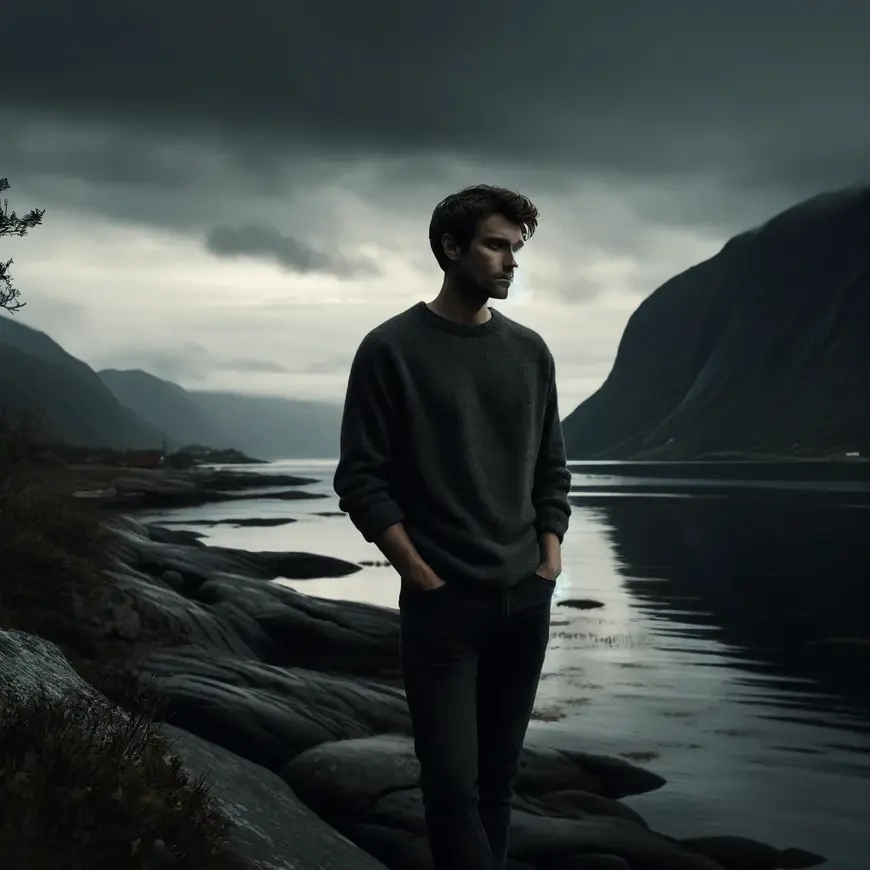A Profound Exploration of the Human Soul – A Review of Jon Fosse’s “Melancholy”
In the realm of contemporary literature, Jon Fosse’s “Melancholy” stands as a lyrical and introspective masterpiece that invites readers to embark on a journey into the depths of the human soul. With prose that is as poetic as it is profound, Nobel Prize Winner Fosse crafts a narrative that explores the intricacies of memory, grief, and the enduring impact of loss.
Unveiling the Labyrinth of Memory: The World of “Melancholy”
Imagine a world where time is fluid, where memories of the past and the present intermingle, and where the boundaries between reality and imagination blur. “Melancholy” immerses us in this world, where an unnamed narrator grapples with the weight of his memories and the pain of loss. Fosse’s narrative takes us on a contemplative journey through the labyrinth of memory, where the past is a haunting presence that shapes the present.
The setting of “Melancholy” becomes more than a backdrop; it’s a canvas upon which the colors of memory and emotion are painted. Fosse’s prose paints a vivid picture of a coastal village in Norway, where the sea and the landscape mirror the ebb and flow of the narrator’s thoughts and recollections, creating an atmosphere that is both atmospheric and emotionally resonant.

Characters in the Shadows: A Symphony of Grief
At the heart of “Melancholy” lies the unnamed narrator, a man who serves as the narrative’s sole focus. His introspective musings and memories become vessels for readers to explore themes of grief, isolation, and the relentless passage of time. His journey becomes a mirror to the broader human experience of grappling with loss and the indelible mark it leaves on the soul.
Themes of Memory, Grief, and Solitude: Insights Explored
“Unraveling the tapestry of memory, grief, and solitude,” Fosse seems to say, as he delves into themes that resonate deeply with the human experience. The theme of memory is central to the narrative, as the narrator navigates the labyrinthine corridors of his recollections, where moments of joy and sorrow coexist. Fosse’s exploration of memory prompts readers to reflect on the way in which the past shapes our perception of the present.
Grief is another prominent theme that surfaces throughout the narrative. Fosse’s portrayal of the narrator’s mourning process and his attempts to reconcile with the loss of his beloved wife serves as a testament to the enduring impact of grief on the human psyche. The tension between the weight of memory and the need for solace creates a narrative that is both poignant and emotionally resonant.
Prose as a Haunting Melody: Fosse’s Writing Style
Jon Fosse’s writing style in “Melancholy” is a haunting melody, a blend of poetic introspection and lyrical descriptions that immerse readers in the inner world of the narrator. His language is both spare and evocative, creating an atmosphere that is both ethereal and deeply emotional. Fosse’s prose carries a weight that conveys the profound nature of grief and the intricate interplay of memory and emotion.
The novel’s structure is deliberate, with each chapter unfolding like a series of reverberating notes in a melancholic symphony. Fosse’s writing style mirrors the contemplative nature of the narrative, where moments of silence and introspection are punctuated by flashes of insight and emotional resonance, creating a narrative that is both meditative and profoundly moving.

Famous Quotes from “Melancholy” by Jon Fosse
- “I am nothing now, nothing at all.”
- “The hardest thing is to see what is right in front of your eyes.”
- “It’s strange how everything just goes on.”
- “Maybe the only thing one can do is try to write the truth.”
- “All these simple, simple things, and yet so difficult.”
- “What is gone is as it never were, and what is here is as it always has been.”
- “It is too late now, always too late.”
Trivia Facts about “Melancholy”
- Inspiration from Real Life: “Melancholy” was inspired by the life of the Norwegian painter Lars Hertervig, who struggled with mental illness throughout his life.
- Historical and Geographical Accuracy: The novel meticulously recreates 19th-century Norway, particularly the environment of the island of Borgøy, where Lars Hertervig was born.
- Literary Style: Jon Fosse is known for his distinctive minimalist style, and in “Melancholy” he employs sparse, rhythmic prose to reflect the inner turmoil of the protagonist.
- Recognition and Awards: Jon Fosse received the Nordic Council Literature Prize, one of Scandinavia’s most prestigious awards, in 2015 for his work, although “Melancholy” itself was not the work awarded, the style and themes in this novel are representative of the qualities that earned him such accolades.
- Translation and Reception: “Melancholy” has been translated into several languages, reflecting Fosse’s international appeal and the universal themes of isolation and existential dread that he explores.
- Influence on Other Arts: The psychological depth and historical context of “Melancholy” have influenced other artistic fields, including theater and the visual arts, demonstrating Fosse’s impact beyond literature.
- Part of a Larger Work: “Melancholy” is the first part of a two-part work, with the sequel titled “Melancholy II.” Both books delve deeper into the psyche of the troubled artist at different stages of his life.
Timeless Relevance: Today’s Reflections
While “Melancholy” is rooted in its specific context, its exploration of memory, grief, and solitude remains relevant in the contemporary world. In an era marked by discussions of mental health, the enduring impact of loss, and the search for meaning in a fast-paced world, Fosse’s examination of these themes offers a timeless perspective.
The theme of memory and its connection to the passage of time continues to resonate, as individuals grapple with the way in which recollections shape their sense of self and the world around them. Fosse’s portrayal of the narrator’s introspection serves as a reminder of the enduring complexity of the human psyche and the need for reflection in an increasingly busy world.
Final Thoughts on “Melancholy”: A Profound Meditation on Memory and Loss
“Melancholy” is a profound meditation on memory and loss that invites readers to immerse themselves in the depths of the human soul, where the past is a haunting presence and grief is an indelible mark. Jon Fosse’s narrative is a testament to the enduring power of introspection and the way in which memories shape our perception of reality.
As readers journey through the world of “Melancholy,” they are reminded of the power of literature to challenge our understanding of memory and grief, to invite us into the inner world of a solitary soul, and to prompt us to reflect on the enduring complexities of our own lives. Fosse’s prose becomes a vessel through which readers can contemplate the profound questions of existence, where memory is both a burden and a source of solace. “Melancholy” is a testament to the enduring relevance of themes that have fascinated thinkers and artists for centuries, and it invites us to navigate the labyrinth of memory with both introspection and reverence.
More Reviews of famous works by Jon Fosse
“I am the Wind” by Jon Fosse: A Haunting Meditation on Existence and Identity Jon Fosse’s “I am the Wind”…
An Intimate Exploration of Time and Memory – A Review of Jon Fosse’s “Dream of Autumn” In the world of…

